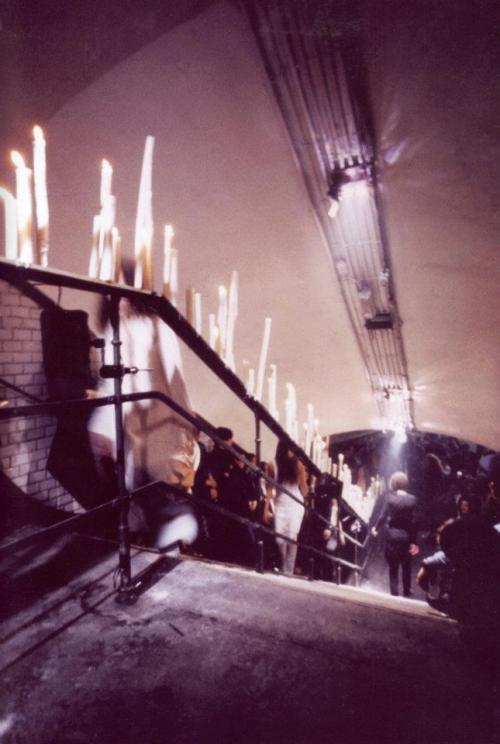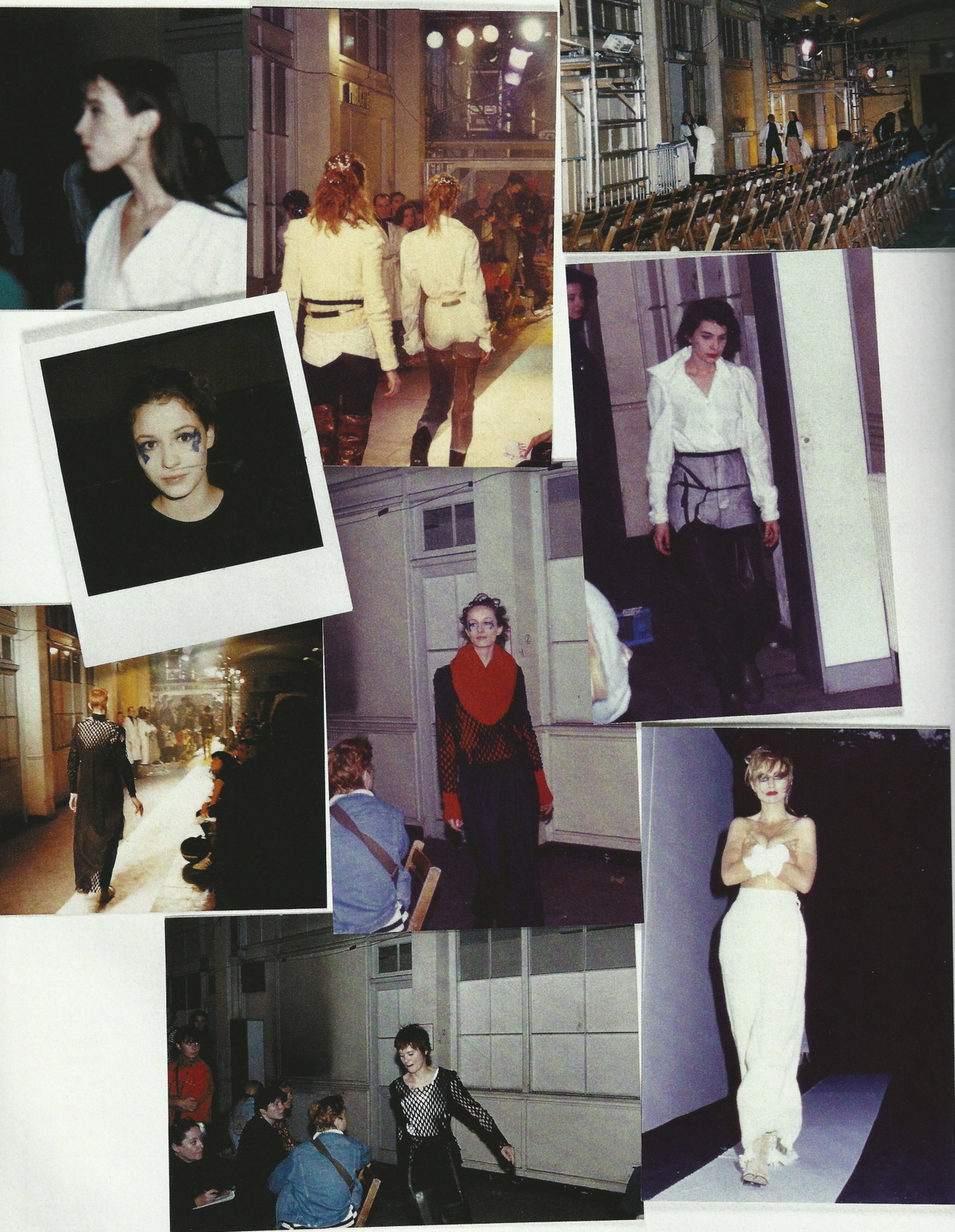Who is that guy everyone's talking about?: Roger Tredre delves into the world of the secretive Martin Margiela, one of the hottest names to emerge from the fashion underground this year
ROGER TREDRE
Saturday, 10 April 1993
IN THE spring of 1993, Martin Margiela is possibly the most fashionable designer in the world. For years he was associated with the fashion underground. Most people within the industry knew his name, but few bought his clothes. He was loved only by hipper-than-thou fashion students and readers of i-D magazine. Now his time has come.
Margiela lives in Paris and designs extraordinary clothes. Beyond that, no one knows much about him. When he launched his first collection in 1988, he would not talk to the press and would not be photographed (I know, I tried). It was not that he disliked journalists. Nor that he was shy (although he is, say his friends). Margiela preferred anonymity because he preferred people to look at his clothes, not him. This is the classic stance of many an artist: challenging the viewer, or the wearer, to judge a work or a garment on its own merits.
You would see him all over the place in Paris - at a restaurant, a club, a fashion show. Once I tried to engage him in conversation, but he shrugged and mumbled some kind of non-response. It was frustrating because, right from the beginning, he was producing unusual clothes that were both exciting and puzzling.
He breaks the rules of fashion. He takes the sort of clothes people wear on the high street or pick up in the flea market and turns them into fashion by mixing and changing the shapes and fabrics. In the process, he challenges conventional ideas of what fashion can be, showing us new ways of wearing familiar items. At a time when designers are reinventing the wheel over and over again, his approach is a genuine breath of fresh air.
Margiela, a tall, gangly man, was one of a group of talented young designers who emerged from the Antwerp Academy of Fine Arts in the mid-Eighties (it is a neat coincidence that 1993, the year of his big breakthrough, is also Antwerp's year as European city of culture).
He comes from Genk in the Limburg region of Flanders, and studied fashion in Antwerp at the same time as Dirk Bikkembergs, Ann Demeulemeester and Dries Van Noten, who have since built international reputations. Margiela designed raincoats for a Belgian firm, then moved to Italy where he worked as a commercial designer.
By the time his contemporaries from Antwerp were making waves at the British Designer Show in London, Margiela was in Paris, where he was famously persistent in his efforts to land a job with Jean Paul Gaultier. 'He kept applying, five, six times,' says a friend. 'In the end, they just had to give him a job.' In 1988, he left Gaultier's studio to set up on his own. He operated on a shoestring budget, designing commercial lines for Italian manufacturers to give him the resources to pursue his uncompromisingly personal vision.
Those first collections intrigued buyers from Europe's more avant-garde stores, although few actually placed orders. One who did was Geert Bruloot, owner of Louis, a high fashion store in Antwerp, and a supporter of Margiela's work from the beginning. 'It was a shock, that first collection,' he admits. 'But it was also a revelation. Martin smelt what was coming, what was in the air. He was looking seasons ahead, taking the most everyday kind of clothes and showing new ways of wearing them.'
A series of fashion shows in unusual locations gave him a reputation. In October 1989, he caused a sensation by showing his collection on rubble-strewn wasteland in the 20th arrondissement. The models stumbled down a makeshift catwalk in plastic dresses, papier-mache tops, jackets with the sleeves ripped off and oversized men's trousers.
Fast-forward to March 1993 and the ready-to-wear collections in Paris. Margiela has stuck to his theme, still deconstructing clothes, but now the fashion world does more than take note: Joseph buys his clothes and Vogue photographs them. Last month there was no fashion show; instead Margiela, visibly growing in confidence, invited journalists into his inner sanctum, the atelier on the Boulevard Saint-Denis. Even more of a surprise, there was the man himself, enthusiastically taking press and buyers through his new collection.
I climbed the stairs to the third floor, and was shown into a small room with bare boards and peeling plaster. The window was covered with silver foil; a chandelier was draped with white muslin. I sat on a small, hard, metal chair covered in white sheet, stared at the back of the door and wondered why Margiela had chosen to hold his coming-out party in this antiseptic environment. It all seemed exceptionally bleak, so I was reassured to detect a sense of humour on the noticeboard in the corridor: letters and faxes collected over the years with umpteen misspellings of the designer's name, from Martin Marigella to Martine, Marin and even Martha Margiela. No one spells his name wrong these days.
Margiela came in, dressed in his habitual uniform of black jeans, a black T-shirt and a little navy blue peaked cap. On top he was wearing the white coat that everyone wears in his atelier. Speaking impeccable English, he explained why he had hitherto been so shy. 'I wanted to express myself through the clothes, and consolidate in that way. Now more and more women are wearing my clothes, and I'm very happy about that.'
It was a full stop on the personal front after that. And definitely no pictures. Margiela talked me through a short black-and-white silent film of eight women wearing his clothes, introducing the people and the garments. 'That's Sophie, she's an architect. She wasn't interested in fashion; she still isn't. She's wearing a dress made from four black flea market dresses sewn together . . . That's Jennifer, an American photographer, playing on her bed in a lambswool dress . . . That's Christine, our in-house model, in a floral dress with mohair sleeves.' You get the idea. He wants to make clothes for real people, for individuals, rather than fashion victims. It is a message preached by many of the new wave of designers.
Afterwards we were joined by a bevy of editors from British Vogue, and Margiela talked through the clothes on the rails. Individual pieces caught the eye: a pair of blue jeans with the seams unpicked, reworked into a skirt; a fencing jacket with a velcro fastening; a quilted cotton pinafore dress; loose mohair sleeves for pinning on to shoulders; a jacket oversized in every respect except for the natural shoulders; a 19th-century priest coat which the designer liked so much he did not tamper with the original design.
You would have to be rather fanatical to like everything he does. His collections are an odd mishmash of the very good and very bad, but who would dare to suggest which is which? For one woman, a dress made up from four dresses bought in the flea market is an exquisite creation. For another, it is an obvious idea that proves nothing to no one.
Margiela rather likes that. Mix and match, he says. Don't dress Margiela head-to-toe. He does not want Margiela groupies. 'I don't like everything I see myself,' he says. It does not work quite like that. His prices are designer prices. His clothes are still bought by the very fashion victims he has fought against for so many years. In the fashion world, such a development is inevitable.
For most of us, Margiela is likely to be more of an influence than a label we want on our backs. Those who know him well say he genuinely has no interest in being a star. And the Margiela label says it all: a scrap of muslin inscribed with no name, no words. The ultimate statement from a designer who wants to go his own way.





